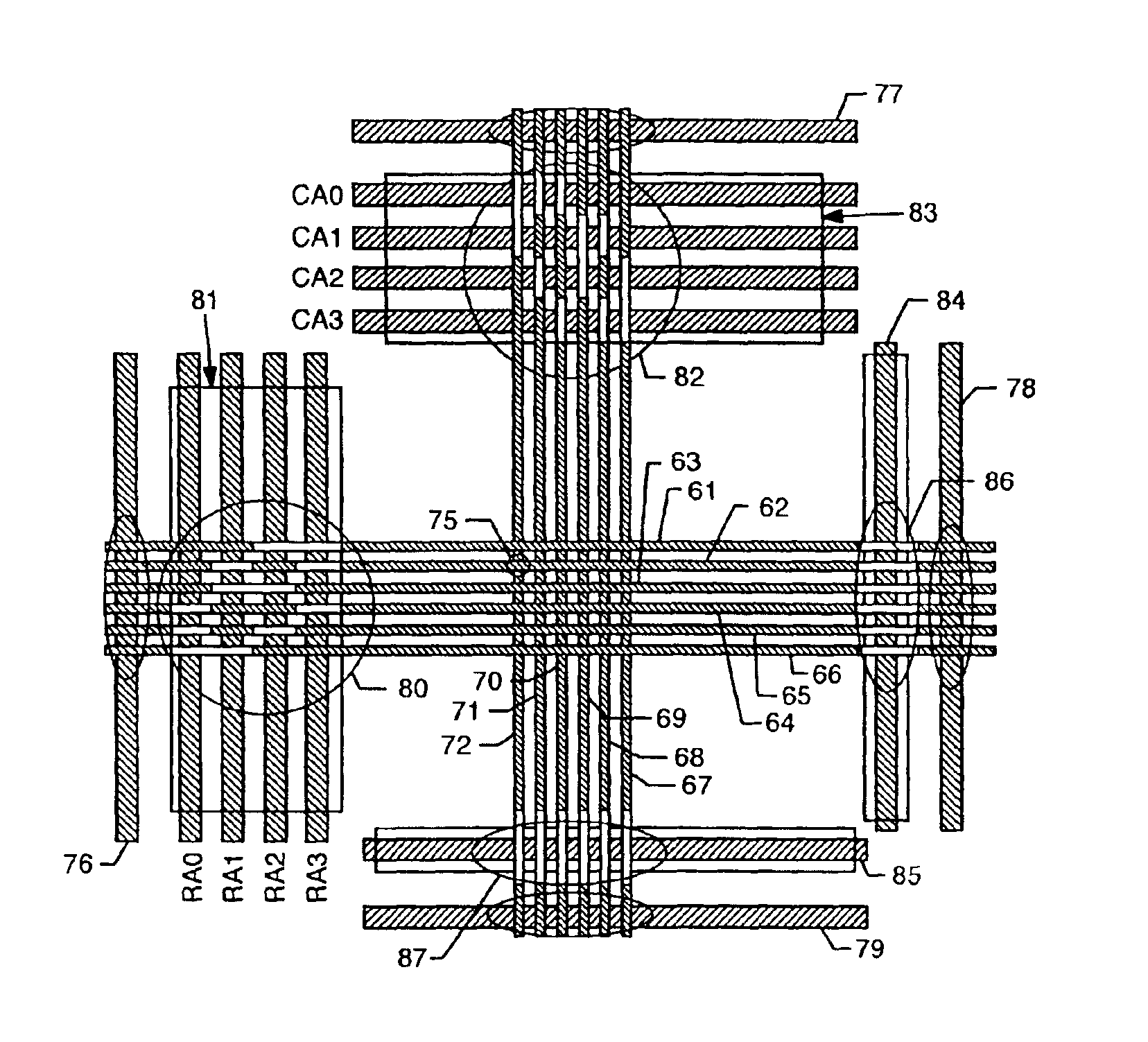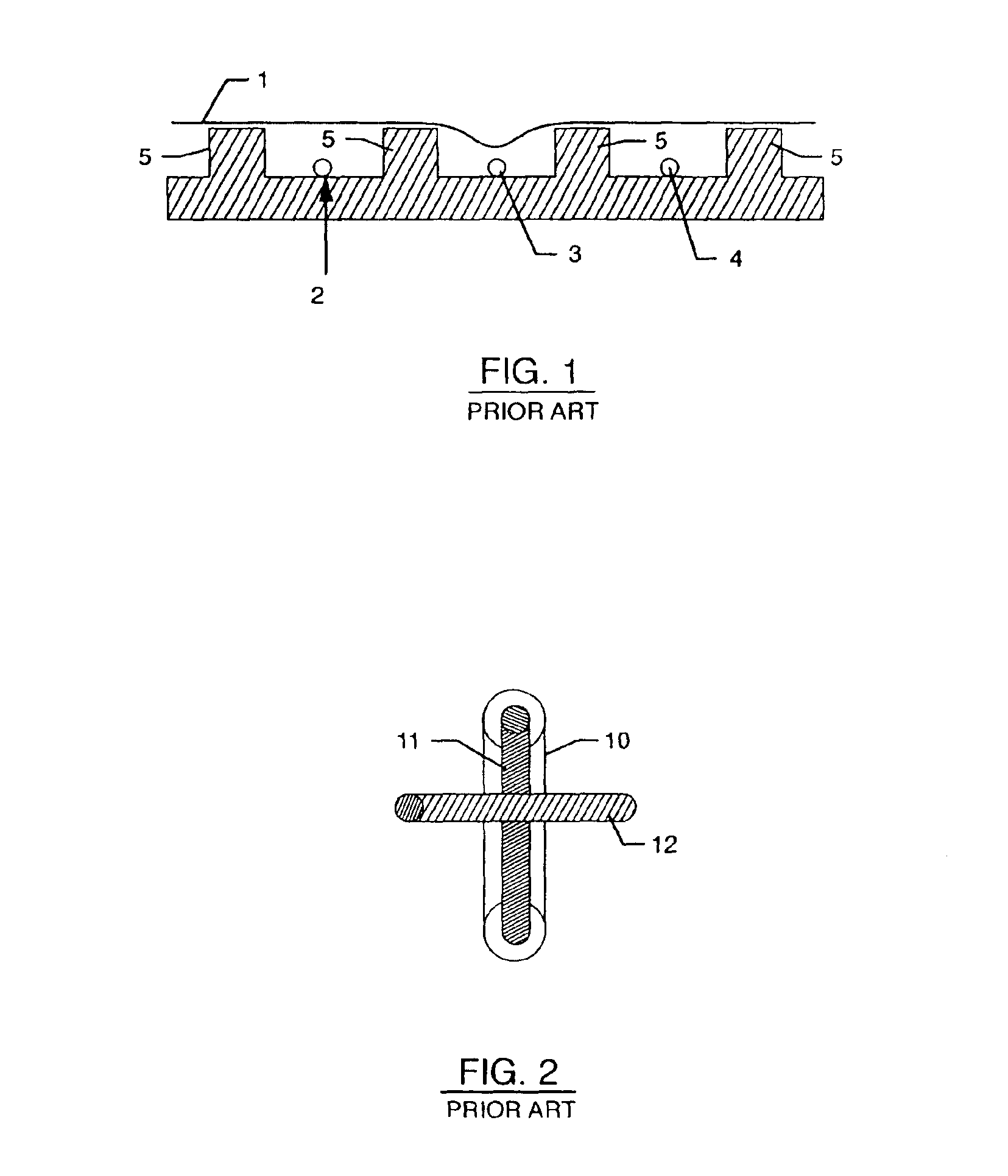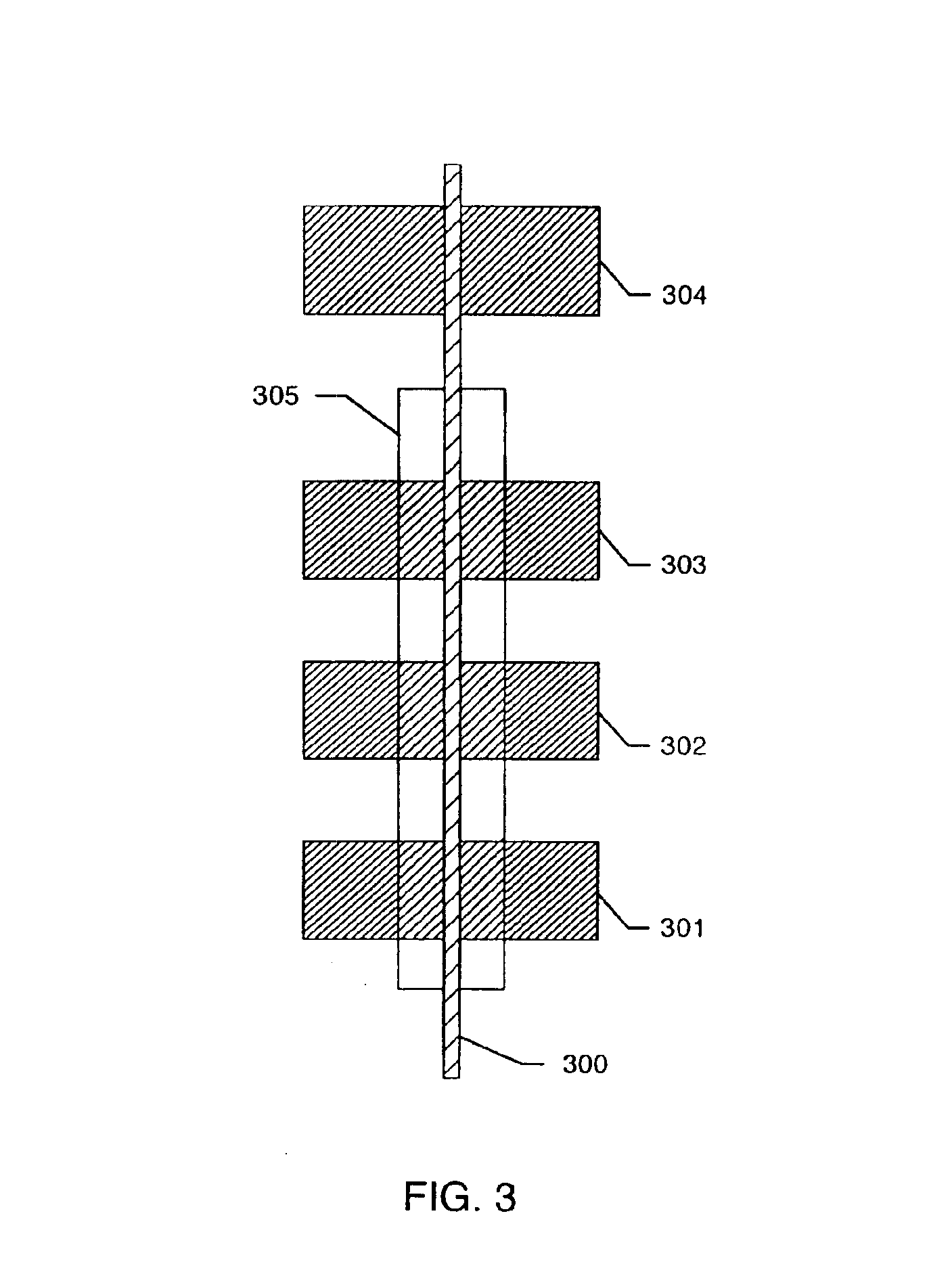Sublithographic nanoscale memory architecture
a technology of nano-scale memory and sublithography, which is applied in the direction of digital storage, instruments, semiconductor devices, etc., can solve the problems of complicated discovery of connected wires, and achieve the effect of reasonable efficiency and tighter address encoding
- Summary
- Abstract
- Description
- Claims
- Application Information
AI Technical Summary
Benefits of technology
Problems solved by technology
Method used
Image
Examples
first embodiment
[0109]FIG. 14 shows a first embodiment for controlling staggered ohmic contacts, where four microscale wires 701-704 and an interface logic 705 are provided. Microscale wire 702 controls whether the operation is a write operation or a read operation, thus allowing communication either to the ohmic contacts or from the ohmic contacts. If the operation is a read operation, the signal is read on the output wire 701. The contacts 110-112 are selected by means of the wires 703, 704. Usually, N contacts will require log2N selection wires.
second embodiment
[0110]FIG. 15 shows a second embodiment for controlling staggered ohmic contacts, in case compact access to the decoder is more important than high-speed access. In this embodiment, only microscale wires 801-804 are needed. Microscale wire 801 carries the shift signal, microscale wire 802 carries the clock signal, microscale wire 803 carries the shift input signal, and microscale wire 804 carries the shift output signals. With a higher number of contacts, more time and a higher number of flip-flops are required, but not a higher number of microscale wires.
[0111]Also in the hybrid control case, control wires can either be microscale wires (as shown) or nanoscale wires.
One-Dimensional Memory
[0112]The embodiment of FIG. 11 shows a two-dimensional memory. The present disclosure also provides a one-dimensional memory embodiment, using a single nanowire layer, as shown in FIG. 16.
[0113]FIG. 16 is similar to FIG. 13, and shows staggered microscale wire contacts 110-112 energizing the endpo...
PUM
 Login to View More
Login to View More Abstract
Description
Claims
Application Information
 Login to View More
Login to View More - R&D
- Intellectual Property
- Life Sciences
- Materials
- Tech Scout
- Unparalleled Data Quality
- Higher Quality Content
- 60% Fewer Hallucinations
Browse by: Latest US Patents, China's latest patents, Technical Efficacy Thesaurus, Application Domain, Technology Topic, Popular Technical Reports.
© 2025 PatSnap. All rights reserved.Legal|Privacy policy|Modern Slavery Act Transparency Statement|Sitemap|About US| Contact US: help@patsnap.com



